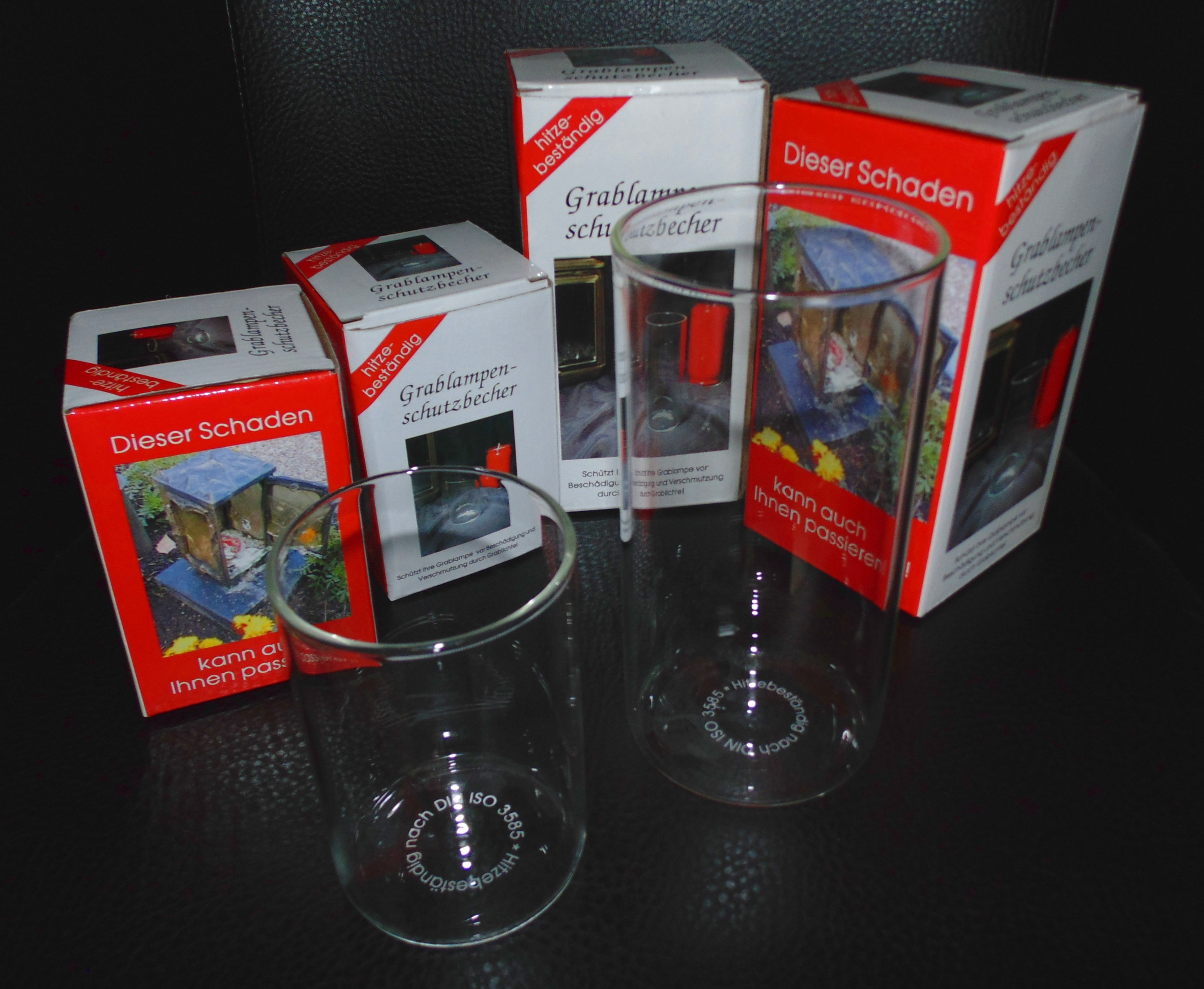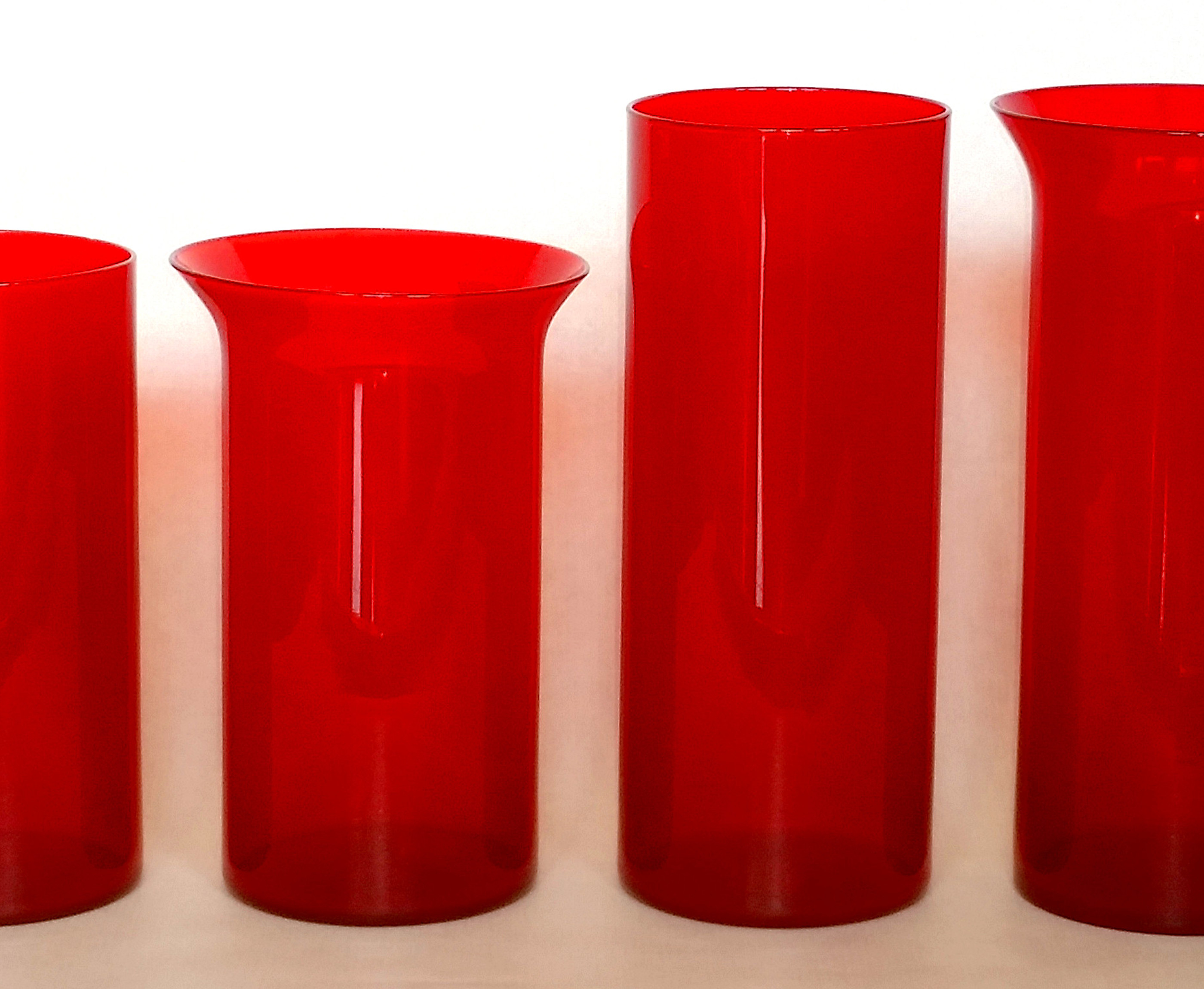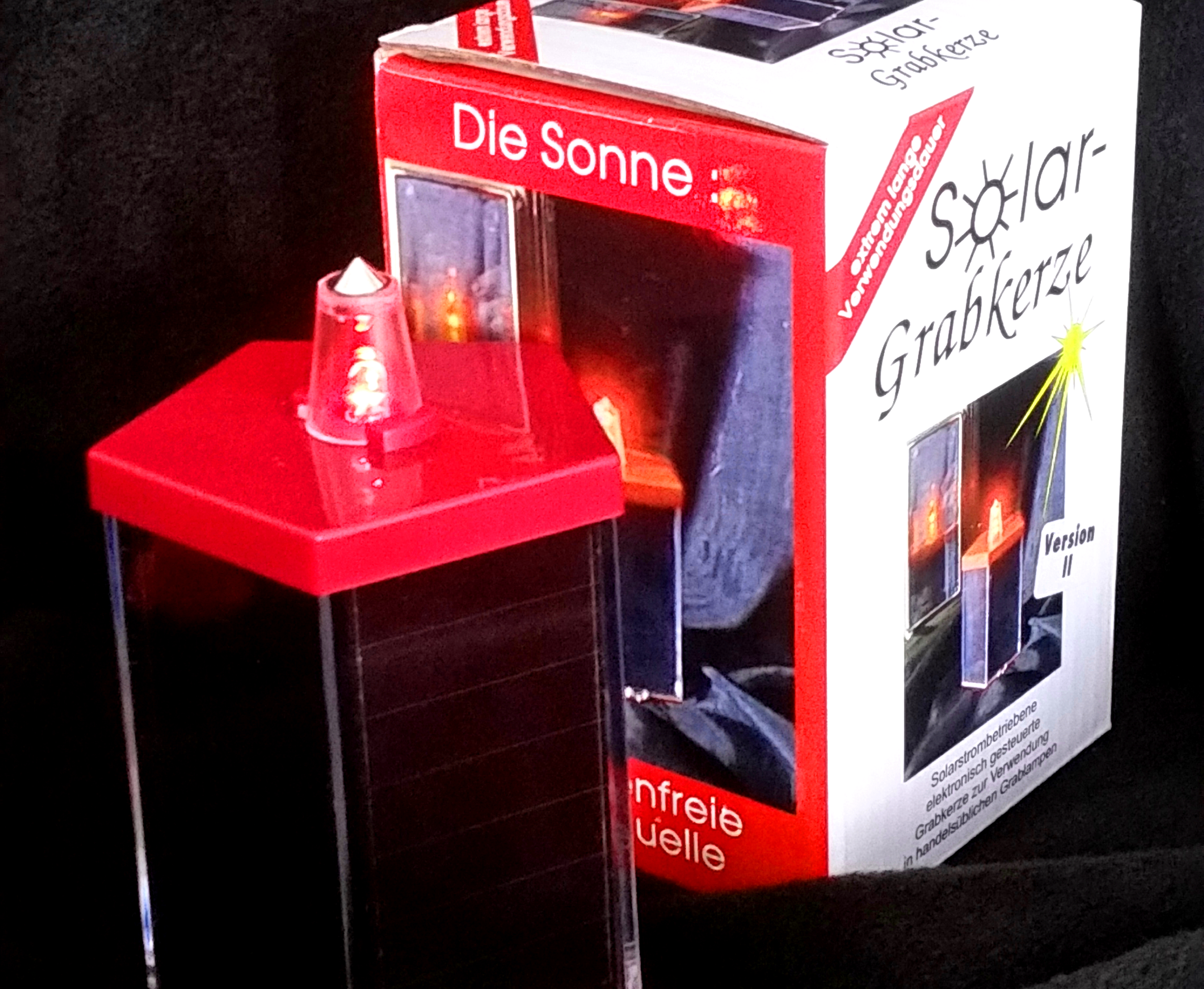FAQ for Borosilicateglass 3.3
Click on the questions that interest you:
Our grave lantern protection beakers (GSB for short) G3 and G7 are made of "borosilicate glass 3.3" (for short Boro3.3).
The maximum permissible operating temperature for Boro3.3 is +500 ° C. From a temperature of +525 ° C the glass begins to soften and from a temperature of +860 ° C it changes to the liquid state.
Boro3.3 can be cooled down to the maximum possible negative temperature and is therefore suitable for use in liquid nitrogen. (approx. −196 ° C). In general, the use of Boro3.3 is recommended down to −70 ° C.
No, the temperature difference of a thermal shock should not be more than 100 ° C or 100 Kelvin. This would be f.e. the case when Boro3.3 is cooled down to 0 ° C and then poured with boiling water (100 ° C, thermal shock = 100 ° C). Since the resistance to changes in temperature is dependent on the wall thickness, this is at a calculated 175 ° C for our beakers with a wall thickness of approx.2.5mm.
This cannot be seen optically. Most manufacturers of heat-resistant glasses, however, leave a note, a stamp or a logo on the article, which indicates Borosilicateglass 3.3. Examples would be DURAN, PYREX, SIMAX or just a reference to the corresponding DIN ISO 3585.
Do not use a lantern protection cup (or any other vessel in this
function) without appropriate proof (the resistance to temperature
fluctuations through the Boro3.3 logo or DIN note), these do not offer real protection!
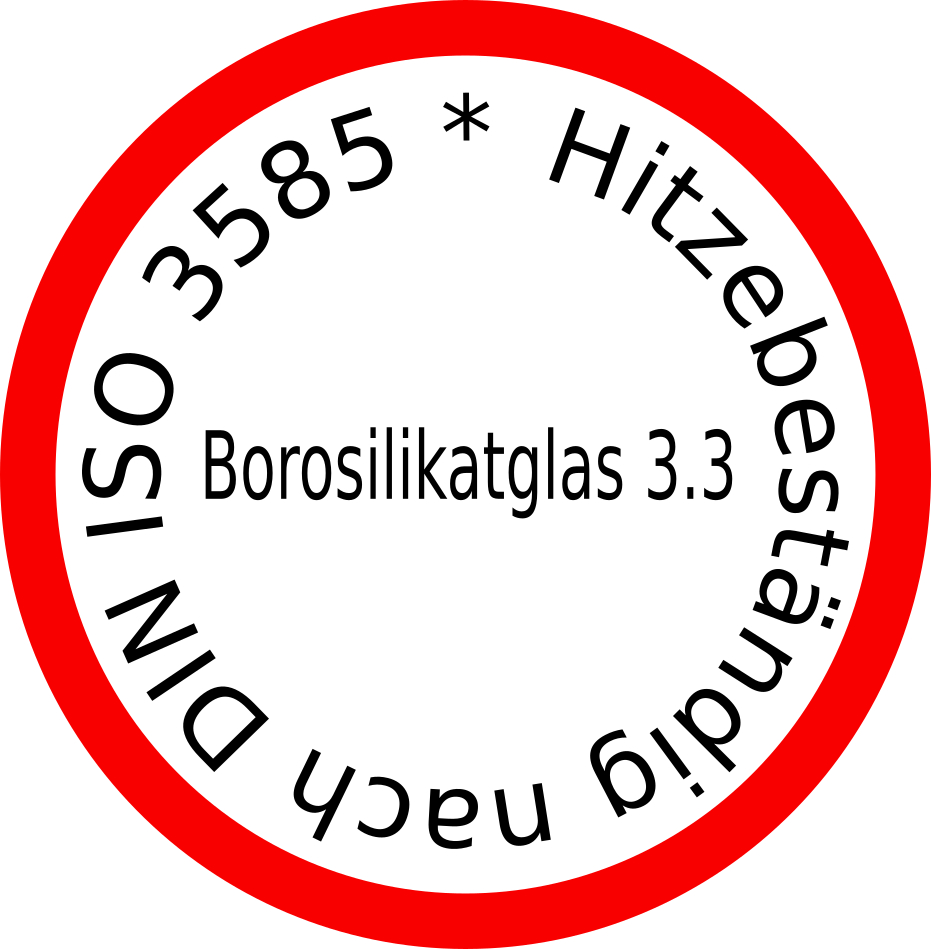
Normal glass only has a temperature change resistance of approx. 40 ° C before it can break
and therefore offers no protection against burning and leaking grave light housings.
The fact is, that, precisely for this reason, many panes of grave lanterns break when they come
into contact with hot wax or when the grave light burns (see photo). This is the clear proof, that
lantern protection beakers can NOT be made from soda-lime-silicate glass!
Our Boro3.3 with a temperature change resistance of at least 100 ° C, arithmetically due to
the wall thickness of 2.5mm even around 175 ° C, can absorb the temperatures occurring during
a grave light housing fire without damage.
Do not use a lantern protection cup (or any other vessel in this
function) without appropriate proof (the resistance to temperature
fluctuations through the Boro3.3 logo or DIN note), these do not offer real protection!
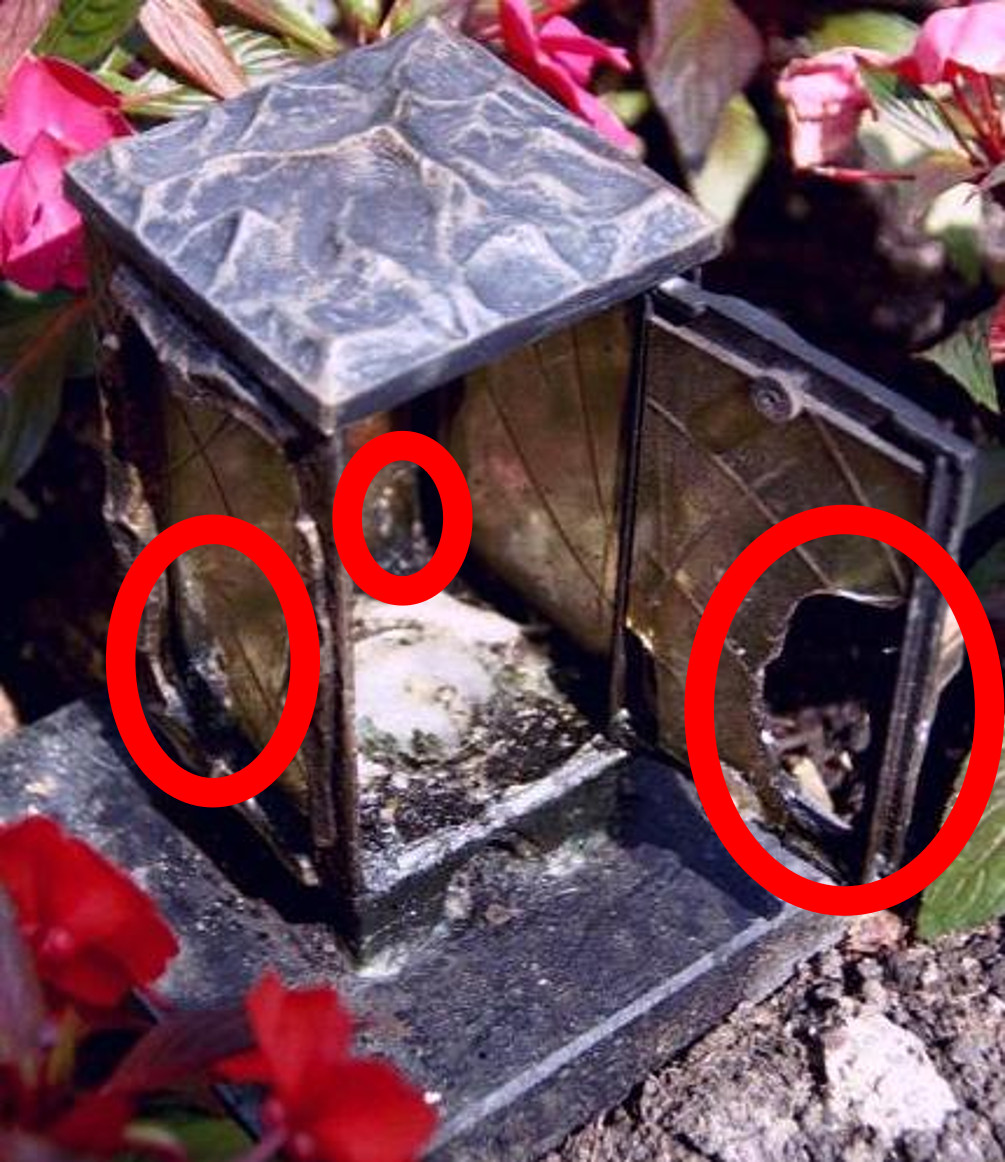
Boro3.3 is characterized by a very low coefficient of linear expansion (3.3 x 10−6K − 1) due to its high resistance to temperature changes (100 Kelvin or 100 ° C). The coefficient of linear expansion is so low that hardly any stresses arise in the material and the glass, f.e. when pouring boiling water into, it does not shatter. Technically speaking, the exact definition is as follows: Average linear thermal expansion coefficient α (20 ° C; 300 ° C) according to DIN ISO 7991: 3.3 x 10-6 K − 1. Boro3.3 is characterized by a very small coefficient of linear expansion (α = 3.3 x 10−6 K − 1) ((20 ° C; 300 ° C) according to DIN ISO 7991) due to its high resistance to temperature changes up to ΔT = 100 K. This means that when the temperature changes by 1 K, the glass changes by only 3.3 x 10−6 relative length units. Example: A 1m long tube made of Boro3.3 would only expand by 0.33mm with a temperature change of 100 ° C! The resistance to temperature changes is dependent on the wall thickness and the geometry of the products. With our beakers, the wall thickness of 2.5 mm results in a calculated resistance to temperature changes of around 175 ° C.
For comparison:
The expansion coefficient of Boro3.3 is only around 40% of
normal (soda-lime) glass. The maximum thermal shock resistance of normal
glass (soda-lime-silicate glass) is only 40 Kelvin or 40 ° C, so Boro3.3 exceeds
this by a factor of 3 and is comparable to porcelain.
In our practical tests, we could not simulate a scenario, using a commercially available grave light, that led to the breakage of Boro3.3. Our grave lantern protection beakers have been on the market since 2001 and we have never heard of one of these beakers being thermally damaged.
Yes. But not the temperature or the temperature change, but the increase in volume of the freezing water can destroy the beaker due to its design. Therefore, in winter, care should be taken to ensure that there is no water in the beaker and that the beaker in the lantern is largely protected against the ingress of water. Winter tip: Put some table salt in the GSB until the bottom is completely covered, then place your grave light on it. This helps prevent frost lenses.
Weck jars are also made of soda-lime-silicate glass, which can withstand
the temperatures of boiling food. However, the temperature change
resistance of around 40 or 50 ° C is not sufficient for a burning grave
light housing, so it does not offer real protection. A mason jar would
certainly be cheaper to buy, but would that also make sense?
To save 1-2 EUR, would you do dispense the safe protection for a grave
lantern (costs more than 100 EUR) and a natural stone grave site (wax stains!),
which costs more than a few thousand EUR?
Would you exchange your car's seat belt for a simple leather belt to
save a few euros?
Hardly likely!
To absorb the temperature changes in a grave lantern with burning grave
light housings and leaking hot wax undamaged, you can't avoid a Boro3.3 glass (or "harder")!
Do not use a lantern protection beaker (or any other vessel in this function)
without appropriate proof (the resistance to temperature changes through
the Boro3.3 logo or DIN note), these do not offer real protection!

Almost all glass articles in laboratories worldwide are made from Boro3.3. In addition to optical applications, the thermal and chemical properties of Boro3.3 are also used as fire protection glazing or heat-resistant household dishes. Even space travel uses it as a thin layer on the heat protection tiles of the SpaceShuttles.
In industry, ceramic products and materials with an operating temperature
of over 600 ° C are generally termed fireproof. According to the
definition (DIN 51 060), however, only materials with a taper point
greater than SK 17, which corresponds to approximately 1500 ° C, can
be described as fire-resistant. This limit temperature is technically
of no real relevance, but is important in terms of customs and mining law.
Accordingly, Boro3.3 is technically not fireproof due to its softening
temperature of +525 ° C.
However, this does not mean a reduction, but only a technical classification of the thermal properties of Boro3.3, since in addition to being used as highly efficient fire protection glazing, it is also used in space travel as a coating of heat protection tiles on SpaceShuttles.
Boro 3.3 is suitable for use in the microwave and is also dishwasher safe.
No. Like all heat-resistant glasses, which also occur in a household, they must never be disposed of in the normal waste glass collection, because due to its high melting point it causes problems with melting with other recycling fragments (lime-soda glass).
PROTECTION BEAKER
CONTACT
Interested? Please write us!
Buchenweg 1a
D-56337 Arzbach
Email: info@best-innovations.de
